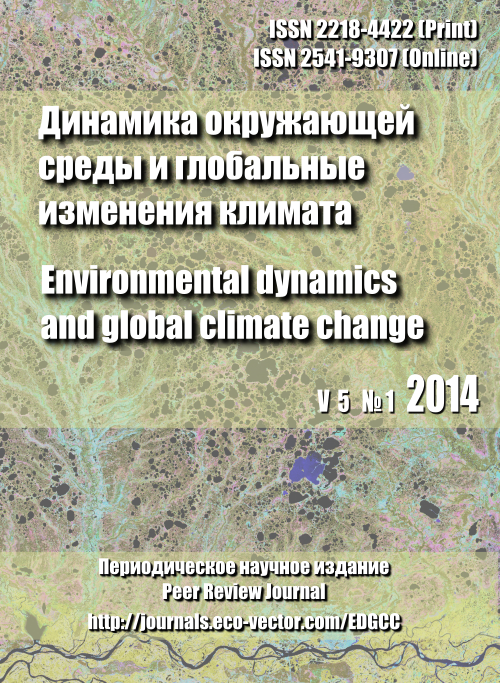Methane is one of the trace gasses, and its impact on the global warming is estimated to be approximately 15 per cent. Even though its concentration in the atmosphere increases relatively slowly, methane absorbs infrared radiation many times more intensively than carbon dioxide does. This makes it of great significance since anthropogenic sources of methane increased in the past decades as well as natural methane emission due to temperature rising. Wetlands are believed to be the main natural source of methane. This is why West Siberia was chosen to study methane fluxes as its territory up to 27 per cent consists of wetlands. A large-scale survey was taken with the aim of measuring methane fluxes in different ecosystems, estimating the total (regional) methane flux from West Siberia and studying the correlation between methane emission and different factors influencing it. Since 1990 th almost all the territory of West Siberia was covered with measurements, but tundra still needs to be studied. The interest in studying methane fluxes from tundra is supported by the fact that here temperature increases faster than, e.g. in south taiga. These rapid changes of temperature may affect methane emission in the future in a rather strong way. In 2013 season, from July 18 to August 5, measurements of methane emissions in south tundra subzone of West Siberia were carried out, using a static сhamber technique. Sampling was conducted in Tazovskiy region, Yamal-Nenets Autonomous Okrug, 12km SSW from the town of Tazovskiy in the most common for this region mire ecosystems: khasyreys, polygonal, oligotrophic and mesotrophic bogs, palsa complexes and dry tundra. The highest methane fluxes values were determined at mesotrophic bogs (total sample median was 2.75 mgCH 4 · m -2 · h -1, lower and upper quartiles were 0.12 and 4.78 mgCH 4 · m -2 · h -1, respectively) and hollows of palsa complex (median 0.79 mgCH 4 · m -2 · h -1, lower and upper quartiles 0.37 and 1.28 mgCH 4 · m -2 · h -1, respectively. The lowest flux values were found at mineral soils of dry tundra, where the median, lower and upper quartiles were -0.05, -0.01 and 0.11 mgCH 4 · m - 2 · h -1, respectively. Also, we report that no daily dynamics of fluxes in dry tundra was found. The frequency distribution functions of fluxes, which was made for oligotrophic bogs, palsa and khasyreys, are similar to lognormal ones. For mesotrophic bogs high fluxes are more frequent than for other ecosystems, where the frequency is near zero. Also, despite the fact that for mesotrophic bogs the most frequent flux is negative, flux median was 2.75 mgCH 4 · m - 2 · h -1 which in owing to high fluxes presence with not zero frequency.
 3-16
3-16


 17-25
17-25


 26-42
26-42


 43-56
43-56


 57-71
57-71










